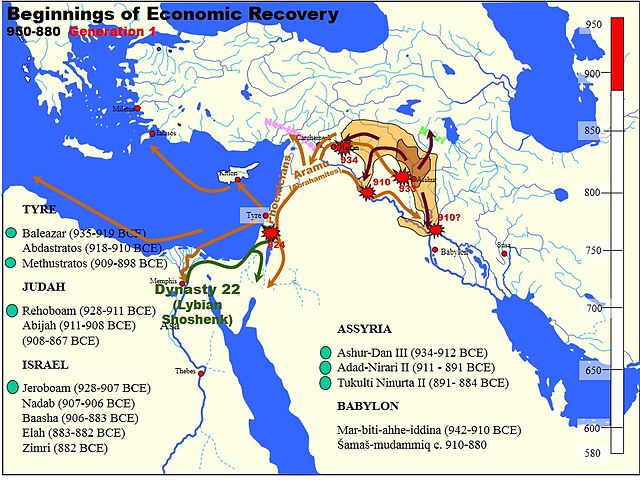Sargon II was the king of the Neo-Assyrian Empire from 722 BC to his death in battle in 705. Probably the son of Tiglath-Pileser III, Sargon is generally believed to have become king after overthrowing Shalmaneser V, probably his brother. He is typically considered the founder of a new dynastic line, the Sargonid dynasty.
Alabaster bas-relief depicting Sargon II, from his palace in Dur-Sharrukin
Relief from Nimrud depicting Sargon II's probable father Tiglath-Pileser III (r. 745–727 BC; right) and possibly also his probable brother Shalmaneser V (r. 727–722 BC; left)
Sargon of Akkad (c.2334–2279 BC) as depicted on his victory stele. Sargon II likely took his regnal name from this ancient king and sought to emulate his exploits.
1903 illustration of a relief from Dur-Sharrukin depicting the rebel Yahu-Bihdi being flayed alive
The Neo-Assyrian Empire was the fourth and penultimate stage of ancient Assyrian history. Beginning with the accession of Adad-nirari II in 911 BC, the Neo-Assyrian Empire grew to dominate the ancient Near East throughout much of the 8th and 7th centuries BC, becoming the largest empire in history up to that point. Because of its geopolitical dominance and ideology based in world domination, the Neo-Assyrian Empire is by many researchers regarded to have been the first world empire in history. It influenced other empires of the ancient world culturally, administratively, and militarily, including the Babylonians, the Achaemenids, and the Seleucids. At its height, the empire was the strongest military power in the world and ruled over all of Mesopotamia, the Levant and Egypt, as well as parts of Anatolia, Arabia and modern-day Iran and Armenia.
Assyrian borders and campaigns under Ashur-dan II (r. 934–912 BC), Adad-nirari II (r. 911–891 BC) and Tukulti-Ninurta II (r. 890–884 BC)
Annals of Tukulti-Ninurta II (r. 890–884 BC), recounting one of his campaigns
Stele of Ashurnasirpal II (r. 883–859 BC)
Assyrian borders and campaigns under Ashurnasirpal II (r. 883–859 BC)








